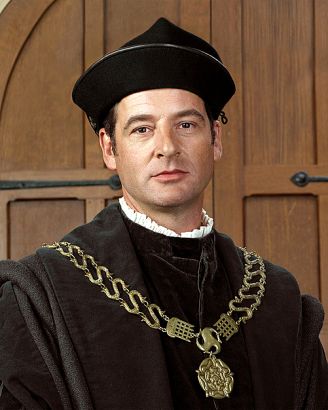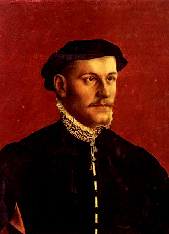Sir Thomas More
Jump to navigation
Jump to search
| See also: The Tudors Cast | The Tudors Episode Guide | |
|
Sir Thomas More as played by Jeremy Northam
Lord Chancellor of England, Lawyer, Author, Statesman, Humanist Scholar and Catholic Saint (Canonized by Pope Pius XI in 1935) | |||||
| Born February 7, 1478 - Executed July 6, 1535 (by Order of King Henry VIII) Character's Backstory: Born in London, Thomas More was the son of Sir John More, a successful lawyer and judge at the Court of King's Bench. Thomas studied Latin and Logic for two years at Oxford University under the patronage of John Morton, Archbishop of Canterbury. At Oxford he met many prominent intellectuals. Among them was Erasmus, with whom he was to carry on a lifelong correspondence. Thomas then returned to London, where he studied the law under his father. After entrance into the English legal establishment of Lincoln's Inn in 1496, Thomas More was called to the bar--thereby becoming a 'barrister'--in 1501. Like his father before him, More became a very successful lawyer. More entered Parliament at the age of 21, and was made Master of the Requests in 1514. He was the author of "Utopia" (1516), among many other notable literary works. His last writings were De Tristitia Christi, a Devout Prayer (penned in 1535, shortly before his death), and A Dialogue of Comfort Against Tribulation, written while in the Tower. More was the most renowned intellectual personage in England in his day. Gentility: Secretary and personal advisor to King Henry VIII. Position: Master of the Requests, 1514. Knighted, 1521. Lord Chancellor of England from 1529 to 1532. In 1532, he resigned the Chancellorship for reasons of faith, as well as personal reasons that could have affected his moral beliefs and his conscience. Personality Type: Serious and highly intellectual. Devoted family man. Very religious, had once considered becoming a priest, staunchly adherent to his ideals and moral practices. Had an unbending will with respect to matters of faith. His daughter, Margaret More--later Margaret Roper--was his favorite child. However, More also caused heretics to be burned alive. More's biographer Peter Ackroyd said : "More embodied the old order of hierarchy and authority at the very moment when it began to collapse all around him." His good friend Erasmus once said: "What did nature ever create milder, sweeter and happier than the genius of Thomas More? All the birds come to him to be fed. There is not any man living so affectionate to his children as he, and he loveth his wife as if she were a girl of fifteen." Signature Look: Hat; also 'S' gold collar of Chancellorship. Endearing Traits: Honesty, integrity, unshakeable religious faith, inflexibility with respect to moral principles. Unlike other men, at the end of his life he admitted his mistakes: He stated in a letter to his daughter Margaret that whatever punishment came to him was because of his sins, so God should therefore judge him for all the wrongs he had committed in his life. Perhaps, at the end, he recognized that he might not have been as right as he always thought himself to be in his decisions concerning others. Annoying Traits: Severe and at times 'hair-splitting' in judgment. Extreme and inflexible in his beliefs. Unbending in his opinions with respect to reformers; later in life he may have repented of his harshness towards them. This regret was never directly stated, but may be gleaned indirectly from the contents of one of his last letters. The letter was written to Margaret (More) Roper, his favorite child and confidant. More could come across as somewhat arrogant, particularly with respect to his religious and political views.
|
‘it was Henry who with increasingly passion saw More as a political enemy and threat and resolved that, if he did not submit, he would be destroyed’ ~ G.W. Bernard 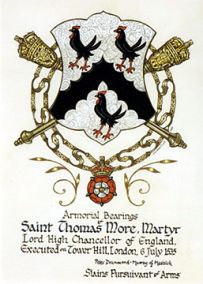 Want to add to this profile? Click EasyEdit to update this page! (Don't see the EasyEdit button above? Sign in or Sign up.)
| ||||
CHARACTER CONNECTIONSFather: John More, respected lawyer and King's Bench judge. Son of William More and Johanna Joye. Mother: Agnes Graunger, daughter of Thomas Graunger. Wives: 1) Jane Colt, married in 1505. More had three daughters and a son by Jane. She died in 1511. 2) Alice Middleton, a widow. Romances: Thomas More's first wife was Jane Colt. The story about More's preference for Jane's younger sister, and that he took Jane out of pity because she was older and still unmarried, is very likely apocryphal. Thomas and Jane were wed in 1505. This marriage was shortlived since Jane Colt More died in 1511, after only six years of marriage. She gave More four children: three daughters and a son. All four were still small children when their mother died. The same year that Sir Thomas became a widower (1511), he remarried. His second wife was a widow named Alice Middleton. More apparently lived happily with Dame Alice for the rest of his life; he adopted her daughter from her previous marriage. Alice had a bad temper and used caustic language. More could not change this trait; however, Alice was said to be an excellent household manager. She was also a good stepmother to More's children and a good mother to her own daughter. Children: By Jane Colt: Margaret 'Meg' (Roper by marriage); Elizabeth (Dauncey by marriage); Cecily (Heron by marriage); and John (who married Anne Cresacre). By More's marriage to his second wife Alice Middleton (the Elder), he became stepfather to Alice Middleton the Younger [married names: 1) Elryngton, and 2) Alington]. More was also adoptive father to Margaret 'Mercy' Giggs (Clement by marriage), who was the orphaned daughter of a midwife. Margaret Giggs was the only member of the family to witness More's execution. More was as affectionate a father to Alice Middleton the Younger and Margaret Giggs, as he was to his biological children. | Friends: King Henry VIII. Queen Katherine of Aragon Princess Mary Tudor John Fisher, Bishop of Rochester. Also later canonized as a Saint. Margaret 'Meg' Roper, More's oldest and favorite child. She became Sir Thomas' biographer along with her husband, William Roper. Elizabeth Barton, the 'Nun of Kent.' Also executed by order of King Henry VIII, in 1534. Desiderius Erasmus of Rotterdam: Another renowned humanist and reformer of the Catholic Church. Not only was Erasmus a close friend of Sir Thomas, but he also corresponded by letter with More's daughter Margaret Roper. To the present day, More and Erasmus remain two of the most renowned philosophers of the Counter-Reformation. Thomas Howard, 3rd Duke of Norfolk Enemies The Boleyn family (Thomas, George, and Anne) Thomas Cromwell, Earl of Essex Thomas Cranmer, Archbishop of Canterbury Together, Cromwell and Cranmer engineered Sir Thomas' imprisonment in 1534; they finally persuaded King Henry to approve More's execution in 1535. |
UNFORGETTABLE CHARACTER QUOTES from history:
|
DEFINING EPISODES | MEMORABLE SCENES
|
For more on Sir Thomas More, click the links below:
|
| <embed flashvars="transition=Fade&site=http://www.thetudorswiki.com&imageServer=http://image.wikifoundry.com&albumId=42037" height="400" src="http://widget.wetpaintserv.us/wiki/thetudorswiki/widget/unknown/6fd87f6d660e41da7bd2a622bfb148c0532f3575" type="application/x-shockwave-flash" width="400" wmode="transparent"/> |
PHOTOS and PAINTINGS
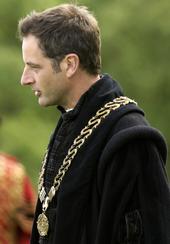 | |
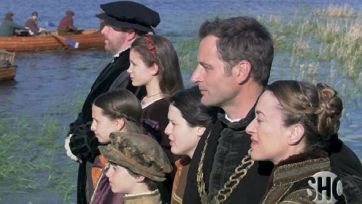 The More Family | 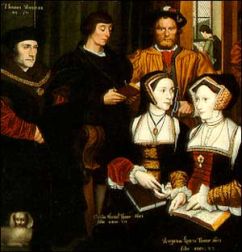 |
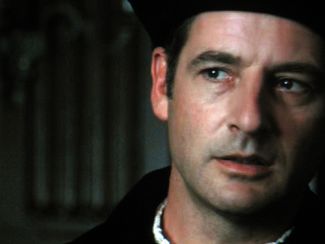 | <embed height="278" src="http://widget.wetpaintserv.us/wiki/thetudorswiki/page/Sir+Thomas+More/widget/youtubevideo/bd5de2d00866772a7bb2eecdedb8271beb5343e4" type="application/x-shockwave-flash" width="337" wmode="transparent"/> |
| <embed allowfullscreen="true" height="279" src="http://widget.wetpaintserv.us/wiki/thetudorswiki/widget/youtubevideo/eeafd571ae02625be74b047500c437fe64c17e3c" type="application/x-shockwave-flash" width="344" wmode="transparent"/> | <embed height="300" src="http://widget.wetpaintserv.us/wiki/thetudorswiki/widget/genericvideo/2ae75dba8632b60f1bc9500320158ff4cafe7d6e" type="application/x-shockwave-flash" width="300" wmode="transparent"/> |
For more on Sir Thomas More, click the links below:
- Historical profile of Thomas More
- <a class="external" href="http://www.thomasmorestudies.org" rel="nofollow" target="_blank">Thomas More Studies</a> (external link)
- Photo Gallery of Seasons 1 & 2
